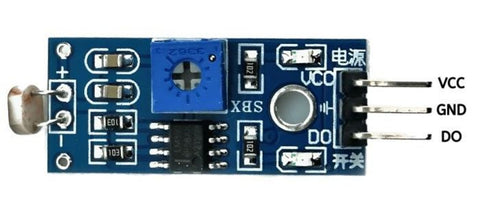3.6/3.7V Dual 18650 Rechargeable Lithium Battery Charger
sim7670c ic is good but it booting is very complication any other metod to connect 4G pius sms read and write
2A Dual L298N Motor Driver Module with PWM Control
LDR Sensor Module (Pack of 25)
Let us know!
We'll try to match the price for you
We’ll notify you once the product is back in stock.
Couldn't load pickup availability


The LDR sensor Module is used to detect the presence of light and measure the intensity of light. The output of the module goes high in the presence of light and it becomes low in the absence of light. The sensitivity of signal detection can be adjusted using the potentiometer. You can adjust the threshold (sensitivity) of the digital output by tuning the onboard variable resistor (potentiometer). Simple usage as it is the digital output, so you will know the light present and decide what to do with it.
LDR sensor Module comes with an M3 mounting hole for ease of attaching it to an object. Onboard, it provides an LDR, high sensitivity and commonly being used for light detection. The module comes with a power LED and a status LED as an indicator. LDR Module Photosensitive resistor module most sensitive to environmental light intensity is generally used to detect the ambient brightness and light intensity.
If you want to use the LDR module in your projects, then you will need a few essential components like an Arduino , relays , breadboard and jumper wires.

LDR Sensor Module pin diagram
| Pin No | Pin Name | Description |
| 1 | VCC | 3.3V to 5V DC power supply |
| 2 | GND | Ground |
| 3 | DO | Digital output |
| Operating Voltage | 3.3V to 5V DC |
| Operating Current | 15ma |
| Dimensions | 5 x 4 x 3cms |
| Weight | 50 grams |